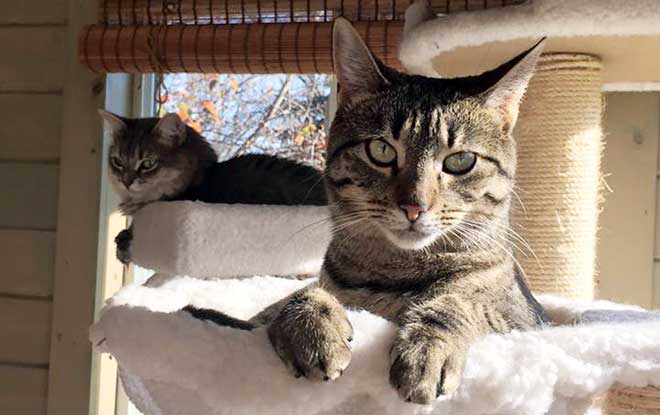Shop At Haya: Your Ultimate Shopping Guide
Discover the best shopping tips, trends, and deals for a smarter buying experience.
Catsplain: Decoding Your Feline's Quirky Antics
Unravel the mysteries of your cat's quirky behavior and learn how to decode their antics for a happier, purr-fect life!
5 Common Cat Behaviors Explained: What Your Feline Friend is Really Thinking
Cats are enigmatic creatures that often leave their owners puzzled by their unique behaviors. Among the most common behaviors is kneading, where a cat rhythmically pushes their paws in and out against a soft surface. This behavior, reminiscent of how they would knead their mother's belly to stimulate milk flow, can signal contentment and affection. Another behavior to note is purring, which is not just a sign of happiness; it can also indicate that a cat is in pain or seeking comfort. Understanding these nuanced signals can help cat owners better respond to their feline friends' needs.
Another typical behavior is scratching, which serves multiple purposes, including marking territory, maintaining claw health, and stretching muscles. Providing a suitable scratching post can prevent destructive behavior while also satisfying this instinct. Cats are also known for their tendency to hide in enclosed spaces, which can be a sign of stress or a desire for solitude. Finally, the famous slow blink is a sign of trust and affection; when your cat blinks slowly at you, it's their way of showing they feel safe and loved in your company.

Understanding Cat Body Language: Decoding Your Pet's Secret Signals
Understanding cat body language is crucial for fostering a strong bond with your feline friend. Cats communicate largely through their body posture, tail position, and ear orientation. For instance, if your cat has its tail held high, it usually indicates a sense of confidence and happiness. Conversely, a cat with a puffed-up tail is often expressing fear or aggression. Observing these subtle cues can help you respond appropriately to your pet's needs and emotions.
Another important aspect of decoding your pet's secret signals is their ear position. Ears that are pointed forward suggest curiosity or interest, while ears pinned back indicate annoyance or fear. Paying attention to these signals can significantly improve your interactions with your cat, allowing you to create a safe and loving environment. Additionally, incorporating regular playtime based on your cat’s body language can enhance their well-being and happiness.
Why Does My Cat Knock Things Over? Unraveling the Mystery of Feline Antics
Have you ever caught your cat in the act of knocking things over? This amusing behavior can leave many pet owners puzzled. One of the primary reasons cats engage in this quirky habit is their natural instinct as hunters. Cats are wired to experiment with their environment, testing objects to see if they move or react. By pawing at items on a table or shelf, your feline friend is not just playing; they are satisfying their innate curiosity. Additionally, this behavior often mimics how they would interact with prey in the wild, showcasing their desire to maintain their territorial instincts.
Another reason for this amusing feline antic is boredom. Cats, especially indoor ones, can become easily bored without enough stimulation. When they lack engaging toys or activities, they may resort to knocking over items as a form of entertainment. To help reduce this behavior, consider providing more interactive toys, puzzle feeders, or designated playtime to keep your cat mentally and physically active. By understanding the underlying causes of your cat's antics, you can not only unravel this mystery but also strengthen your bond and enhance their quality of life.